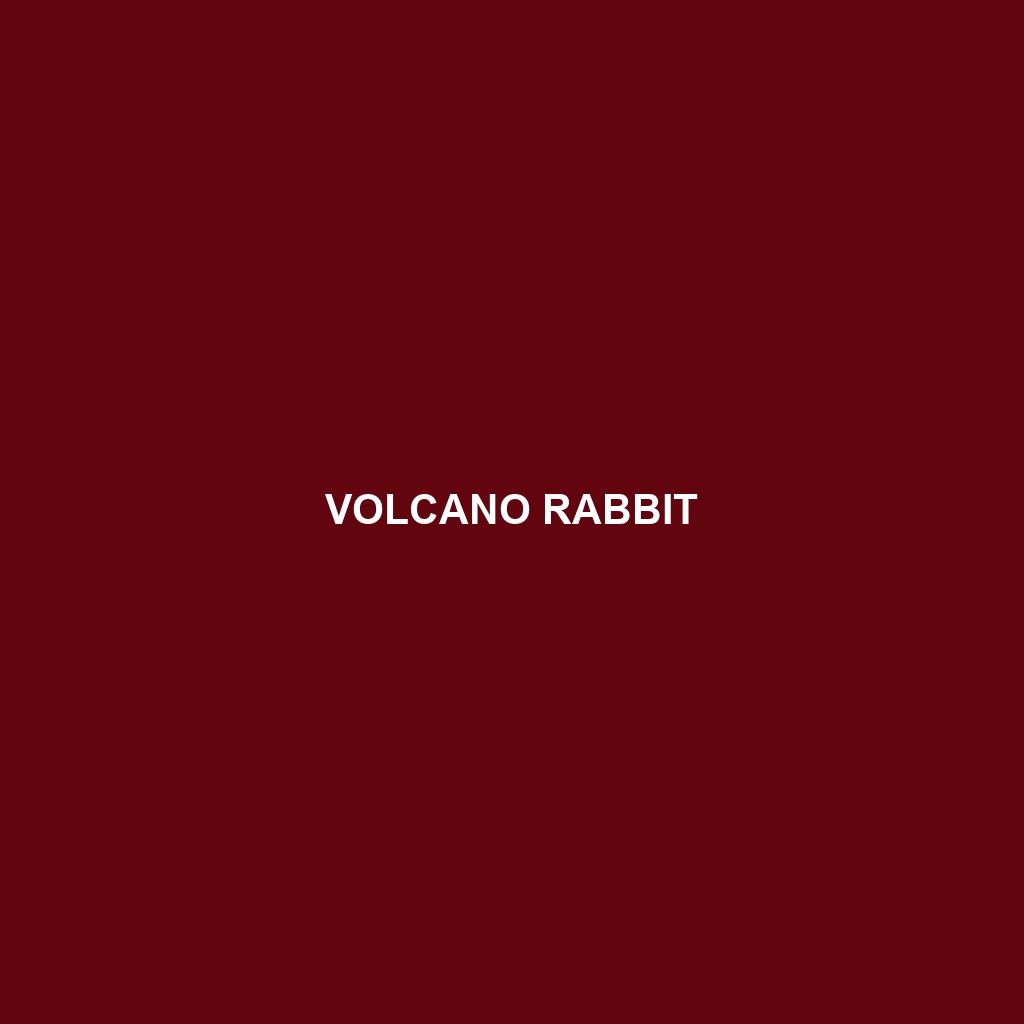Volcano Rabbit (Scientific Name: Romerolagus diazi)
Habitat
The Volcano Rabbit, primarily found in the central mountainous regions of Mexico, inhabits subtropical and temperate forests, particularly in the areas surrounding volcanic regions. This species prefers high-altitude environments, often residing at elevations between 3,000 and 4,200 meters above sea level. Its natural habitat consists of dense grasslands and bushy areas that provide adequate cover from predators.
Physical Characteristics
The Volcano Rabbit is a small lagomorph, measuring about 34 to 50 cm in length and weighing between 1.5 to 2.5 kg. It has a distinctive appearance with short ears and a compact body. The fur is notably dense and soft, featuring a dark-gray coloration with lighter undersides. Its unique adaptations include a shaggy coat that insulates it against the cooler climate found in its high-altitude habitat.
Behavior
Known for its elusive nature, the Volcano Rabbit is primarily crepuscular, being most active during early mornings and late afternoons. This species is generally solitary or may form small family groups. Volcano Rabbits exhibit territorial behaviors, marking their territories with scent, and are known for their ability to swiftly navigate through dense underbrush, evading predation.
Diet
The diet of the Volcano Rabbit primarily consists of grasses, herbs, and leaves, reflecting its herbivorous nature. These rabbits are opportunistic feeders and selectively consume young shoots and tender leaves during warmer months, while foraging for twigs and shrubs in colder seasons. Their feeding habits are critical for maintaining the health of their grassland ecosystems.
Reproduction
Volcano Rabbits typically breed between February and August, producing one to three litters per year. A typical litter consists of two to four kits, which are born hairless and blind. Maternal care is crucial, as females build nests with vegetation for protection, and kits become independent after several weeks, learning essential survival skills from their mothers.
Conservation Status
The Volcano Rabbit is currently classified as endangered due to habitat loss from agricultural expansion and urbanization. Conservation efforts are in place to protect its remaining habitats, and raising awareness about its plight is crucial for the species’ survival.
Interesting Facts
One of the most intriguing facts about the Volcano Rabbit is its status as one of the world’s smallest rabbits. Additionally, these rabbits have adapted well to their harsh environments, showcasing a remarkable ability to thrive in volcanic landscapes, which few other mammals can inhabit effectively.
Role in Ecosystem
The Volcano Rabbit plays a vital role in its ecosystem as a herbivore. By grazing on grasses and other vegetation, it helps to maintain plant diversity and health. Furthermore, as prey for predators such as hawks and foxes, it contributes to the balance of the food web in its mountainous habitat, making its conservation essential for the overall ecological integrity of the region.
